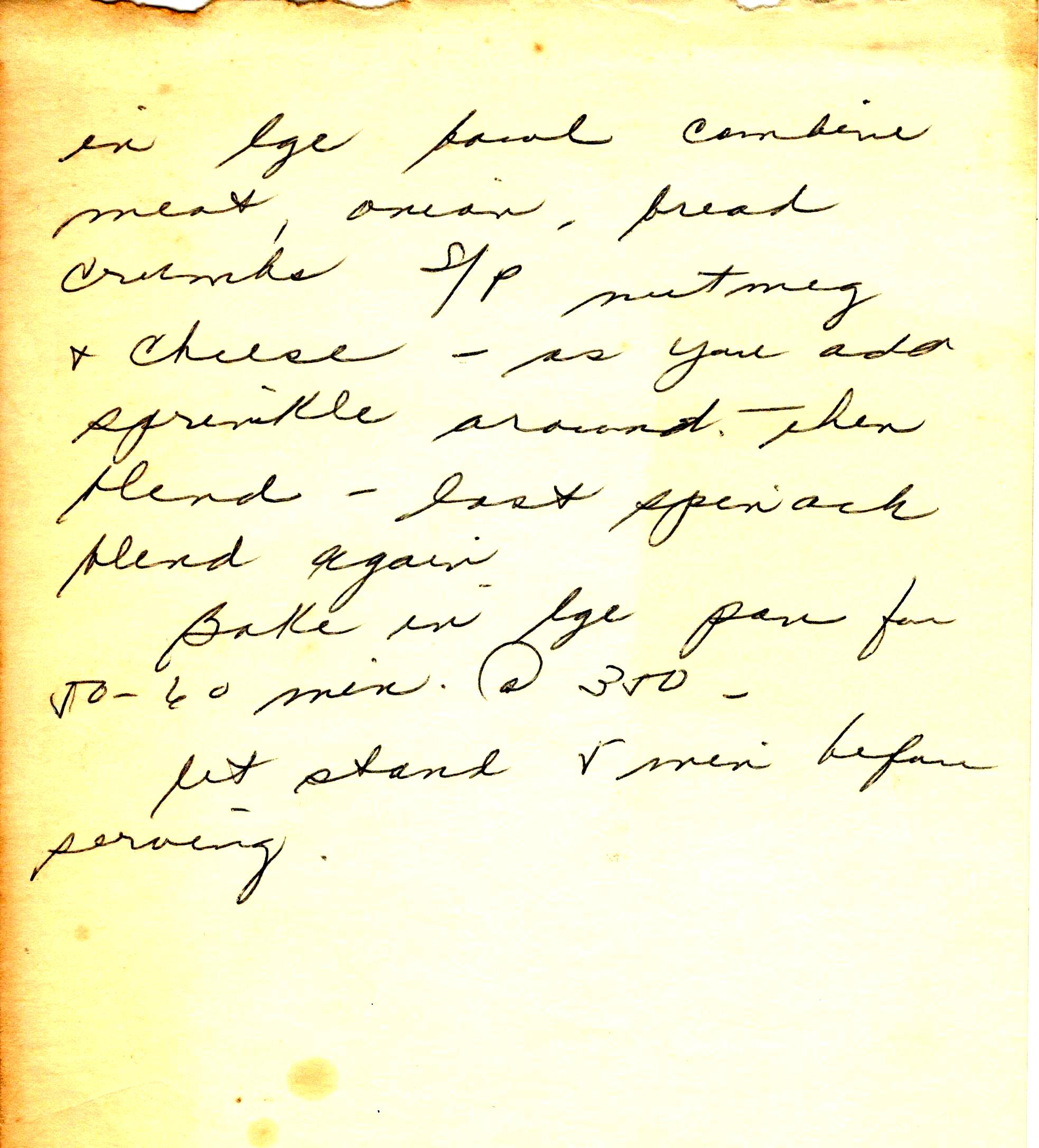Mother's Day Handwritten Recipe • Arthur Schwartz’s Marble Meatloaf
Bretty Rawson
Note from curator Rozanne Gold: This priceless story, so perfect for Mother’s Day, is personal and poignant. It comes from New York’s beloved Food Maven, Arthur Schwartz who happens to be one of my closest friends. We met each other in 1978 in the kitchen of Gracie Mansion, when I was the chef for Mayor Ed Koch and Arthur was the restaurant critic for the New York Daily News. Arthur went on become a legendary food writer and radio personality, but also a well-respected cooking teacher and “walking encyclopedia” of all things Italian, Jewish, and New York. His is a rich and riveting portfolio of knowledge and experience. You can learn more about Arthur from his many cookbooks, including Jewish Home Cooking: Yiddish Recipes Revisited. Many thanks to Arthur for his “Mother’s Day” essay – a treatise on food and memory for sure, but also one, quite fittingly, about the art of handwriting.
Recipes My Mother and Grandmother Wrote by Arthur Schwartz
Elsie was a great and avid cook. My mother, Sydell, her daughter, was a good cook, but she never had the enthusiasm for cooking that Elsie had. It’s obvious from her recipes, however, that she at least wanted to continue family food traditions, which she did, more or less, after my grandmother died. Most of her recipes in that folder, written in my mother’s very neat, even beautiful, penmanship, are from my grandmother’s repertoire. I can tell which were written by Elsie herself because my grandmother’s handwriting was sloppier than my mother’s, though derived from the same New York City standard as my mother’s, and, in fact, my own handwriting, which is somewhere between the two in clarity.
We all learned the same style of penmanship in New York City schools. Called The Palmer Method, it was taught in New York from the late nineteenth or early twentieth century (as far as I can tell) until relatively recently, when cursive writing ceased to be taught altogether. When we all grew up, however, examples of The Palmer Method in which we were mercilessly drilled, was exemplified over every elementary-school blackboard in an alphabet printed on oak tag. For the longest time, I have been looking for a cache of recipes in a manila folder, mostly for Passover, handwritten by my grandmother and mother. They were on odd slips of paper, on the backs of envelopes (my grandmother’s favorite “note” paper, it seems), or scribed onto pages torn from notebooks. Some are mere ingredient lists, some have full or sketchy directions. But for the life of me, for years I couldn’t find them until just a few weeks ago.
Spring cleaning my office, I came across them in time to motivate me to make one of my family’s favorite Pesach dishes for our Seder. It is sweet potato and prune tzimmes, a sweet and sour casserole flavored with a goodly amount of flanken, which, to the Yiddish cook, is short ribs cut across the bone instead of between the bones. It’s one of the few recipes of my maternal grandmother, Elsie Binder Sonkin, that I have not published during the 47 years I have been a food writer and editor, and I was happy to see it outlined in my mother’s neat cursive. It was delicious, by the way.
The most thrilling recipe I found in that folder, however, was not any of my grandmother’s, most of which I have already published in books, newspaper columns and magazine articles, but my own. It is for a meatloaf I created about 30-something years ago (before I would have put it on my computer) for the birthday of my long-time partner and now legal spouse, Bob Harned. Bob has fond memories of this meatloaf recipe, which was published in a weekly column called “Sundays in the Kitchen with Arthur” that I was writing for the New York Daily News Sunday magazine. I called it Marble Meatloaf, because it is streaked with spinach. Bob has asked me to make it again from time to time, but I’d lost track of the exact recipe. I am sure the magazine it appeared in is packed in one of the many archival boxes in our storage locker, but I’ve never gotten the energy to pursue the search.
Sydell’s handwritten version to the rescue, a gift from my mother, who died 26 years ago, on Mother’s Day. I think I have to make it this weekend.
Arthur Schwartz’s Marble Meatloaf
Ingredients
1 medium onion, finely diced
2 tablespoons butter or oil
1-1/2 lbs. ground chuck
½ cup fine dry bread crumbs
½ cup milk or water
1 egg
1 teaspoon salt
½ teaspoon freshly ground black pepper
1/8 teaspoons freshly ground nutmeg
3 to 4 tablespoons grated parmesan cheese
10-ounce package chopped spinach, thawed
Serves 4
Directions
- In a small skillet, sauté onion in butter until golden, about 8 minutes. Meanwhile, combine bread crumbs and milk; let stand so crumbs absorb milk, then, with a fork, beat in the egg.
- Take the chopped spinach in small handfuls and squeeze out excess moisture.
- In a large mixing bowl, combine the ground beef, the sautéed onion, the bread-crumb mixture, salt, pepper, nutmeg, and grated cheese. As you add the ingredients, distribute them around the surface of the meat, don't just plop them in.
- With your hands, blend everything together until mixed well. Add the spinach and mix again, just until all the ingredients seem equally distributed. Don't overmix or knead the meat.
- Turn the meat mixture into a rectangular baking dish and pat into a rye-bread shaped loaf about 4 inches across at the bottom and tapered towards the ends. Bake in a pre-heated 350-degree oven for 50 to 60 minutes, depending on doneness desired. Let rest 5 minutes before serving. Serve hot or at room temperature.





